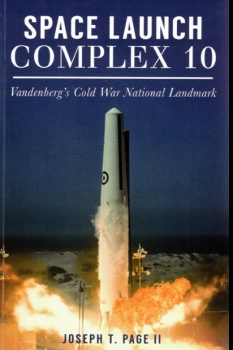The history of rocketry and space tends to be written either by university professors as an academic exercise or by journalists and other writers with a life-long interest in the subject. This book is different in that its author is a former US Air Force space and missile officer and self-confessed ‘amateur space historian’. His experiences as a young lieutenant at Vandenberg Air Force Base (VAFB) in California prompted him to learn more about what was done at Space Launch Complex 10 and who did it. This appreciation of ‘the men and women who… worked diligently under the veil of anonymity to provide support to national security’ is the result.
The author divides his appreciation into three logical sections on the past, present and future. The volume concludes with appendices providing an overview of SLC-10 facilities, launches from the complex and the rocket that performed those launches (the fabled Thor, which was later developed as the equally fabled Delta). The endpapers also include chapter notes, a bibliography, a list of acronyms and an index.
One of three Thor launch complexes at VAFB, SLC-10 had two main applications: between 1959 and 1962, it was used for ‘combat training launches’ by the UK’s Royal Air Force; and between 1965 and 1980 it launched American weather satellites in the Defense Meteorological Support Program (DMSP). UK-based readers will find the detail of the Thor deployment known as ‘project EMILY’ of particular interest (missile nicknames included ‘Acton Town’, ‘Shepherds Bush’ and ‘Skye Boat’).
After the complex was decommissioned, it was dedicated by the Department of the Interior as a National Historic Landmark and is now a historical and educational resource. The author describes the various phases of its life with an amount of technical information and political context that will suit most readers – it’s enough to explain what went on without becoming bogged down in detail.
The monochrome photos interspersed throughout the text help considerably in telling the story. Although the presentation of facts becomes a bit disjointed towards the end of the book, anyone with an interest in space history will want to study the section entitled ‘Preserving the past, inspiring the future’ and possibly even make the trip to Vandenberg for a public tour of ‘Slick-10’, as insiders call it. If you do, read this book first.
Mark Williamson











